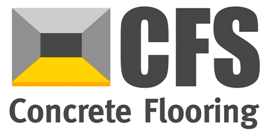Curing of Concrete: Everything You Need to Know
The curing of concrete is one of the most essential parts of any job involving concrete installations. Here at Concrete Flooring Solutions, we work hard to ensure every floor we install is as seamless and strong as possible. That’s why we carry out thorough curing on all our concrete floors installations, ensuring they are strong and durable for many years to come. But what exactly is concrete curing, why is it important, and what are the benefits?
Curing of Concrete Definition
Curing refers to hydration and is defined as a process that provides adequate moisture, temperature, and time for the concrete to achieve the desired properties for its intended use. When the process of curing is carried out properly, the final properties of the concrete mix will be long-lasting and reliable.
Curing concrete is about maintaining an adequate moisture content and temperature in the concrete so that it can develop the right properties to ensure longevity. Without an adequate supply of moisture, the properties in concrete cannot react to form a quality product.
How Long Does Compaction and Curing of Concrete Take?
Curing of concrete is an important part of the floor’s development and a process that should not be rushed. The main reasons for allowing plenty of time for curing is to assist in the strength development and to improve the durability potential of freshly-placed concrete. Generally speaking, the length of adequate compaction and curing time is dependent on the following factors:
- Mixture proportions
- The size and shape of the concret
- The specified strength
- Future exposure conditions
- Ambient weather conditions
Effective curing prevents the evaporation of water from the concrete’s surface and this helps to control the effects of damaging internal temperature fluctuations. In other words, the concrete is protected from becoming cracked or damaged on the surface as a result of temperature changes and the weather.
The Objectives of Curing Concrete
Curing concrete is important because it ensures the quality of your floor. Properly curing concrete will help prevent it from drying, shrinking and cracking. Curing concrete is important for the following reasons:
Predictable Strength Gain: laboratory tests show that in a dry environment, concrete can lose as much as 50% of its potential strength compared to concrete that is moist cured. Curing helps the concrete develop strength so that it lasts longer and is less prone to damage in the future.
Improved Durability: concrete that has been cured properly has a better surface hardness and is able to withstand wear and tear much more effectively than concrete that has not been cured. What’s more, curing also makes the surface watertight, preventing moisture damage and thereby increasing durability and service life.
Better Serviceability and Appearance: concrete that has been allowed time to dry out will have a soft surface with poor resistance to general wear and tear. Taking the time to properly cure concrete reduces these problems.
The Curing Process of Concrete Explained
Curing concrete is a detailed process that requires time and attention to detail. If the process is rushed and the concrete is allowed to dry prematurely, the desired finish will not be achieved. There are a number of methods used for the curing of concrete and they fall broadly into the following categories:
Water Concrete Curing
This method of curing prevents water loss from the surface by uninterrupted wetting of the exposed concrete through the spraying or sprinkling of water to keep the surface continually moist. The method of water curing helps to retain moisture from the body of concrete, preventing evaporation and encouraging the concrete to gain strength. Water curing methods include poding, sprinkling, fogging, and mist curing, as well as wet coverings.
Membrane Concrete Curing
Curing concrete with a membrane helps to lessen speedy water loss from the surface by covering it in an impermeable membrane. These membranes are commonly sprayed over freshly laid concrete to create an impermeable membrane that reduces the loss of moisture. The most common membrane curing methods are plastic sheeting and formwork.
Steam Concrete Curing
Curing concrete with steam helps to raise the temperature of the concrete to quicken the rate of strengthening. If you are looking for an accelerated curing method, steam curing is the way to go. Steam curing is a process used to help speed up the early hardening of concrete and is commonly used when the turnaround for work needs to be very quick.
The Benefits of Curing Concrete
If the time is taking to ensure the curing of concrete is carried out properly, there are a number of benefits you can enjoy, including:
- Increased wear resistance
- Increased frost resistance
- Reduction of surface erosion
- Improved life span
- Increased resistance to thermal contraction
- Optimum strength development
- Reduction in cracking
- Improved durability
- Easy maintenance
- A smooth sleek appearance.
At Concrete Flooring Solutions, we are passionate about delivering the standards our customers expect. When you choose us for your concrete floor installation, we can guarantee a professional and expert installation that will last for many years to come, letting you enjoy all the benefits above and many more.
Concrete Floor Installations at Affordable Prices
If you would like to find out more about concrete flooring installations and our process, please do not hesitate to get in touch. We are proud to deliver stunning and long-lasting concrete floors for all of our customers. For over 30 years, our team has been involved with some of the largest clients and contractors in the construction industry. So, we know what it takes to install and cure concrete to the highest of standards. Call us today to discuss your requirements and have your questions answered.
